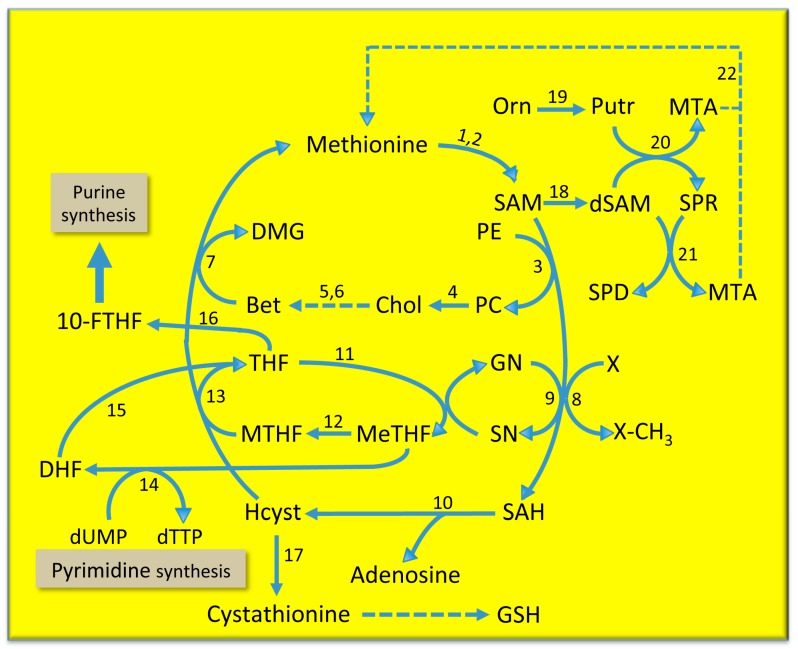Figure 1.
Metabolic cycles involved in methionine metabolism. Substrates: Bet, betaine; Chol, choline; DMG, dimethylglycine; dSAM, decarboxylated S-adenosylmethionine; GN, glycine; GSH, reduced glutathione; HCyst, homocysteine; Me-THF, 5,10-methylenetetrahydrofolate; MTA, 5-methylthioadenosine; MTHF, 5-methyltetrahydrofolate; MTR, methylthioribose; Orn, ornithine; PC, phosphatidylcholine; PE, phosphatidylethanolamine; Putr, putrescine; SAH, S-adenosylhomocysteine; SAM S-adenosylmethionine; SN, sarcosine; SPD, spermidine; SPR, spermine; THF, tetrahydrofolate. Enzymes: 1, MATI/III, methyladenosyltransferase I/III; 2, MATII, methyladenosyltransferase II; 3, phosphatidylethanolamine N–methyltransferase; 4, various phospholipases; 5, choline oxidase; 6, betaine aldehyde dehydrogenase; 7, betaine homocysteine methyltransferase; 8, glycine N-methyltransferase; 9, various methyltransferases; 10, S-adenosylhomocysteine hydroxylase; 11, methyltetrahydrofolate reductase; 12, 5-10-methylene-tetrahydrofolate reductase; 13, methionine synthetase; 14, thymidylate synthetase; 15, dihydrofolate reductase; 16, formyltetrahydrofolate synthetase; 17, cystathionine synthetase; 18, S-adenosylmethionine decarboxylase; 19, ornithine decarboxylase; 20, spermine synthetase; 21, spermidine synthetase; 22, 5-methylthioadenosine nucleosidase. The dotted arrow indicates the “salving pathway” for methionine resynthesis.

